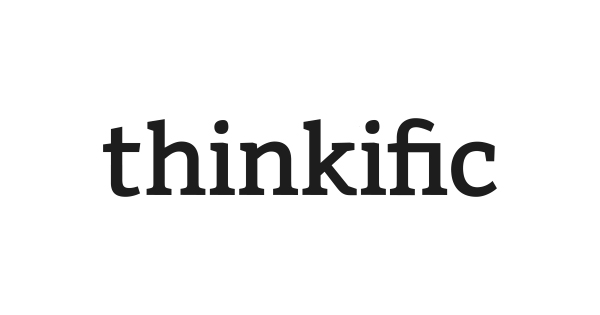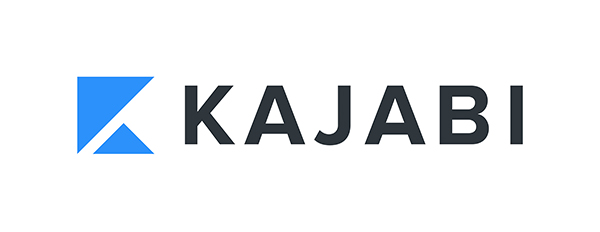Thinkific vs Kajabi: Comparison of Online Course Platforms
Contents
Thinkific and Kajabi are popular platforms for those looking to create online courses. These platforms have been developed especially for the education sector and are designed according to the needs of students. In this content we will compare Thinkific vs Kajabi platforms.
Thinkific is a cloud-based online course platform that allows teachers to create and manage their courses on their own websites. The platform allows teachers to upload course materials in different formats such as video, audio, text and PDF files and provide access to students. Thinkific also offers a host of features such as payment processing, course materials, course progress tracking, and course certifications.
Kajabi, on the other hand, is a platform that specializes in creating online courses, as well as creating online membership sites, websites and other digital products. Kajabi allows teachers to create their courses on their own website and also offers features such as email marketing, payment processing, webinars and e-commerce alongside course materials.
Both platforms offer tools to help teachers build their own brand, customize their lessons, and provide a better learning experience for their students.
For the needs, both platforms specialize in creating online courses and serve the education sector in particular. However, each platform has different features and advantages, so each teacher needs to choose the most suitable one based on their needs and goals.

What are Thinkific vs Kajabi?
Thinkific vs Kajabi are popular platforms for those looking to create online courses. These platforms have been developed especially for the education sector and are designed according to the needs of students.
Thinkific is a cloud-based online course platform that allows teachers to create and manage their courses on their own websites. The platform allows teachers to upload course materials in different formats such as video, audio, text and PDF files and provide access to students. Thinkific also offers a host of features such as payment processing, course materials, course progress tracking, and course certifications.
Kajabi, on the other hand, is a platform that specializes in creating online courses, as well as creating online membership sites, websites and other digital products. Kajabi allows teachers to create their courses on their own website and also offers features such as email marketing, payment processing, webinars and e-commerce alongside course materials.
Both platforms offer tools to help teachers build their own brand, customize their lessons, and provide a better learning experience for their students.
For the needs, both platforms specialize in creating online courses and serve the education sector in particular. However, each platform has different features and advantages, so each teacher needs to choose the most suitable one based on their needs and goals.
Thinkific vs Kajabi Features
While Thinkific vs Kajabi share many similar features as online course platforms, each platform also has its own unique features. Below is a comparison of the features of Thinkific vs Kajabi.
Course Creation Tools
Thinkific:
- Creating multiple lesson types (video, audio, text, PDF files, etc.)
- Multi-language support
- Customizable course templates
- Exam creation and assessment tools
- Interactive learning features (forums, surveys, etc.)
- SCORM compliance (Learning Management System (LMS) standard)
- Optional digital credentials
Kajabi:
- Creating multiple lesson types (video, audio, text, PDF files, etc.)
- Lesson preparation tool
- Create a course with ready-made templates
- Interactive learning features (forums, surveys, etc.)
- Exam creation and assessment tools
- SCORM compliance
Course Management Tools
Thinkific:
- Student management (enrollment, resources, progress tracking)
- Payment transactions
- Course certificates
- Community management (forums, discussion boards)
- Lesson planning and calendar
Kajabi:
- Student management (enrollment, resources, progress tracking)
- Payment transactions
- Course certificates
- Community management (forums, discussion boards)
- Lesson planning and calendar
Payment Transactions and Subscriptions
Thinkific:
- Free, pay-once and subscription-based payment models
- Support for more than 100 currencies
- Tax calculation and management
- Discount and coupon code management
Kajabi:
- Free, pay-once and subscription-based payment models
- Support for more than 20 currencies
- Tax calculation and management
- Discount and coupon code management
- Payment plans
E-commerce Features
Thinkific:
- Create a course sales page
- Integrated payment processing (PayPal, Stripe, etc.)
- Creating a product sales page
- Product inventory management
E-commerce Reporting
Kajabi:
- Create a course sales page
- Integrated payment processing (PayPal, Stripe, etc.)
- Product sales count

Thinkific vs Kajabi Comparison
Pricing is an important comparison factor between Thinkific and Kajabi. Both platforms offer several different plans, and prices vary based on the features of the plans.
Thinkific’s Pricing:
Free Plan: Limited features, unlimited courses, students, and lessons.
Basic Plan: $39/month, unlimited students and lessons, customizable site design, payment processing, quizzes and quizzes, unlimited activities.
Professional Plan: $79/month, Basic Plan features + more quizzes and quizzes, customized product sales pages, custom certifications.
Premium Plan: $399/month, Professional Plan features + custom APIs, group collaboration, custom page redirects, custom theme support.
Kajabi’s Pricing:
Basic Plan: $149/month, unlimited courses, students and lectures, customizable site design, payment processing, quizzes and quizzes, product sales pages.
Groove Funnels Platinum: $1799/year per month, all the features of Kajabi + the e-commerce and sales funnel features of GrooveFunnels.
Pro Plan: $399/month, Basic Plan features + more quizzes and quizzes, custom certificates, custom theme support, custom APIs.
Elite Plan: $899/month, Pro Plan features + exclusive experiences, custom transaction fees.
Which platform is more suitable depends on needs and budget. Thinkific offers more affordable plans, while Kajabi offers a more comprehensive feature set and is more powerful in terms of e-commerce features. You can make the most appropriate choice by identifying your needs and comparing the features of each platform.

Thinkific vs Kajabi Pros and Cons
Thinkific Pros:
- It offers more affordable plans.
- It offers unlimited courses, students and lessons.
- Provides customizable site design.
- It offers an easier and user-friendly interface.
- Free plan is available.
Thinkific Cons:
- It does not offer as comprehensive a feature set as Kajabi.
- E-commerce features are not as advanced as Kajabi.
- It does not have Kajabi’s online marketing tools.
Kajabi Pros:
- It offers a more comprehensive feature set.
- It has powerful e-commerce features.
- It offers online marketing tools.
- The course enables webinars and product sales.
- It provides high quality site design.
Kajabi Cons:
- It offers higher priced plans.
- It has a more complex interface.
- It offers less flexibility.
Which platform is more suitable depends on the needs. If you’re on a lower budget and can do the job with a simpler feature set, Thinkific might be a good fit for you. However, if you need a more comprehensive feature set, powerful e-commerce features, online marketing tools, and a high-quality site design, Kajabi may be a better option. Also, identify your needs and compare the features of both platforms to determine which platform is best for you.



